On a sunny May afternoon in a downtown Vancouver office, Kimberly Sayson wields a piece of repurposed cardboard, furnace filters and a new roll of duct tape. With a bit of help, Sayson has built a set of do-it-yourself air filters in less than an hour. If operating properly, they can drastically slash the risk of COVID-19 infection and reduce the impact of wildfire smoke.
“These were very easy to build,” she said. “It’s basically just duct taping a bunch of stuff together.”
Sayson is office and systems co-ordinator for The Tyee news non-profit, whose offices served as laboratory for her experiment. In fact, this is Sayson’s second experience with filter-craft. Last fall, more Tyee staff wanted to return to the office and chilly temperatures made it difficult to rely on open windows for a steady breeze. Sayson knew that the building’s HVAC system wouldn’t cut it.
But when she tallied the cost of buying enough off-the-shelf HEPA filters to clean the entire office, it was steep. “When I did the math, it would have cost a lot of money,” she said.
According to Sayson’s calculations, purchasing enough store-bought models of similar specifications and quality would cost over $5,000 to filter the air of a mid-sized shared office like The Tyee’s. The equivalent DIY boxes cost just over $600.
“When I was thinking about solutions, I was like, this seems like a pretty good one.”
Alongside the COVID-19 pandemic and frequent smoky skies from wildfires, conversations around indoor air quality have taken on new urgency. But pollutants like mould, allergens and other microbes also pose invisible threats, putting indoor air quality at the top of a dangerous list. “For most Canadians it’s our biggest environmental health risk,” said Jeffrey Siegel, a professor of civil engineering at the University of Toronto. “It’s enormously important.”
A growing tome of evidence suggests cleaning that air can have myriad benefits: students at well-ventilated schools, for example, have been found to perform better on standardized tests.
And with COVID-19, a growing body of research suggests ventilation works: a study of 10,000 classrooms in the Marche region of Italy, for example, found that risk of COVID-19 infection decreased by at least 74 per cent in spaces using mechanical ventilation.
HEPA filters from the store have clear advantages — they’re easy to purchase and they’re quality-tested. But they have drawbacks: the cost of buying good filters, as Sayson discovered, can be prohibitive, and when wildfires hit, stores often sell out.
In the last decade, DIY filters grew an underground following, but until recently, there was relatively little research to back them up. Do furnace filters duct taped to cardboard really compare with readymade filters?
Turns out, they do.
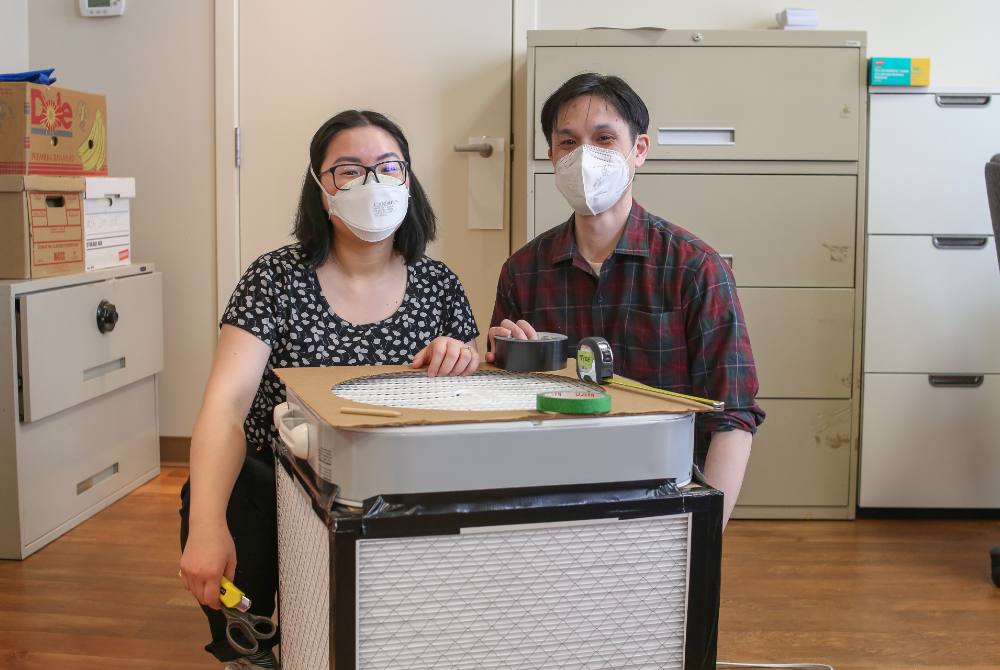
If done right, they work well
“If you use good-quality materials and a good construction job, they work really well,” said William Lindsley, an engineer at the U.S. Centers for Disease Control and Prevention and co-author of a recent report that discovered DIY air filters could cut aerosol exposure by up to 73 per cent, if done right. Lindsley said their research aligns with several studies on DIY air cleaners that came to similar conclusions.
That includes 2023 research from Canada’s National Collaborating Centre on Environmental Health in Vancouver, showing that DIY filters perform similarly to off-the-shelf variants and cost a lot less. Those findings line up with a 2021 CBC Marketplace investigation which found that a DIY filter outperformed the pricey Dyson Pure Hot+Cool air purifier, a current variation which now retails for about $850.
Variations for DIY filters abound, but one of the most popular versions, and the one tested by Lindsley and his colleagues, is dubbed the Corsi-Rosenthal box. The box was born after ventilation expert Richard Corsi tweeted out a concept for an effective DIY filter in August 2020 and Jim Rosenthal, his friend and entrepreneur, decided to build it.
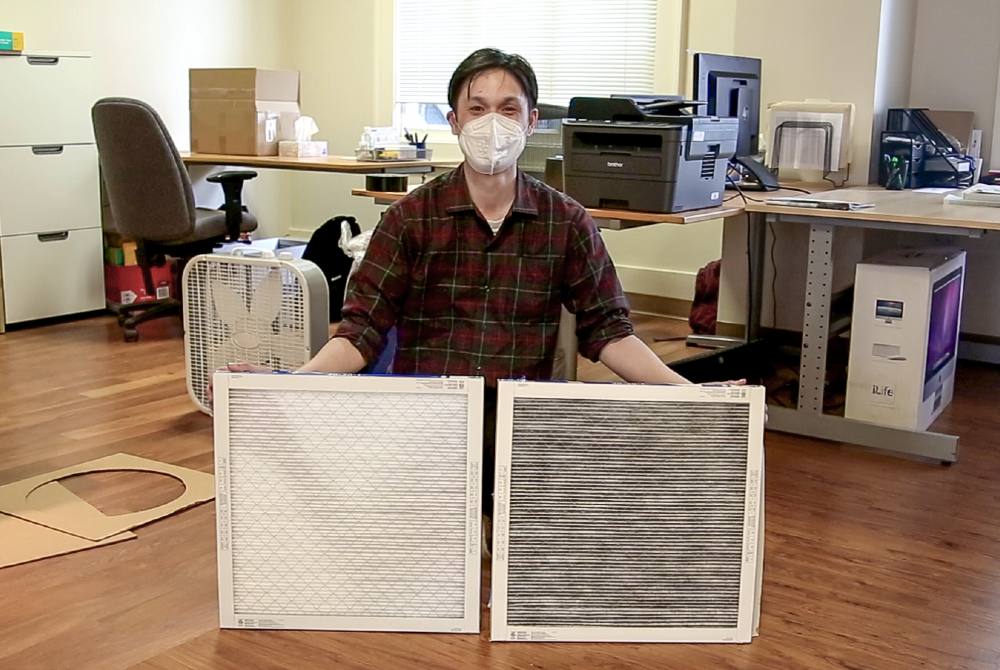
Why indoor air quality gets ignored
After some online research, Sayson decided the Corsi-Rosenthal model — a taped-up four-walled box made up of four furnace filters — was the way to go for cleaning the air at The Tyee.
When it comes to DIY filters, some Canadian governments and institutions remain skeptical. The Vancouver District Parents Advisory Council said the Vancouver School Board rejected their request to allow parents to provide their schools with Corsi-Rosenthal boxes. In Quebec, parents have petitioned to put Corsi-Rosenthal boxes in schools, but the province has so far refused.
This winter, a B.C. school district rejected attempts from a parent to bring Corsi-Rosenthal boxes to his child’s classroom, stating that the boxes had not been approved by the CSA Group, a product certification and standards development group formerly named the Canadian Standards Association.
But as research on the effectiveness of the boxes accumulates, parents groups’ in both regions say governments’ positions are increasingly out of touch.
For Siegel, governments’ failure to supply ventilation equipment speaks to a bigger issue: that indoor air quality, on the whole, tends to get ignored. “Indoor air is really, really hard to regulate,” he said, but he calls on governments to beef up regulatory provisions despite the challenges, along with investments to put air filters in schools, prisons and even in individual homes.
“I think we need a systemic approach,” he said.
Without that effort, Siegel worries that already-existing air quality inequities across class and racial lines could deepen. He's concerned about a future where “wealthy people have good indoor air quality, and those who aren't wealthy don't.”
DIY filters aren’t a panacea for a systemic undertaking, but Siegel sees them as a helpful tool in making clean air a bit more accessible.
“As a DIY filter, I love them. They're great.” he said. “They're just part of a solution,” he said.
Masks reign supreme
Corsi-Rosenthals are supercharged when paired with masks. Lindsley’s research found that on their own, masks cut aerosol exposure by 75 per cent, but when paired with the filter, aerosols were reduced by 94 per cent. Masks, in other words, still reign supreme.
“There's just nothing we found as effective as the mask, in terms of reducing the number of particles that are put out in the environment,” said Lindsley.
Another limitation of DIY filters? They need to be maintained. That means changing the filters frequently — generally around six months, or every time a big wildfire hits, says Siegel. And air filters don’t address chemical pollutants that arise from wildfire smoke.
“They’re like any other kind of layer of protection. They've got holes in them — so to speak,” he said.
For Sayson, the research backing up the Corsi-Rosenthal boxes makes them a worthwhile pursuit. And, an opportunity to learn a new skill.
“My job title is office co-ordinator, so perhaps building an air purifier is outside of what most people’s expectations of what that job might be,” she said.
“It did feel good to have done this.”
You, too, can build your own Corsi-Rosenthal box. Read on to learn all you need to know about the art of filter-making.
The nitty gritty on air filters
Air filters are a two-part contraption: A filter, of course, and a fan to push the air through it. The trick is finding the right balance between these two features — the filter needs to be thick and dense enough to screen the air while having a fan powerful enough to push it through.
Those two considerations put together equal the so-called clean air delivery rate — the mark of quality for any air filter, which measures the rate of air particles sucked out of the air in a given time frame. “That's a really important number,” said Siegel.
But the power of air filters is context-specific: their effectiveness depends on the size of the job — or the size of the room — they’re filtering. Combining the clean air delivery rate with room volume tells you how many times a fan can filter an entire room’s air. This is referred to as the “air change rate.”
Among air ventilation experts, the gold standard is six air “changes” per hour.
That presented Sayson’s first challenge: to determine how many filters it would take to clean the office’s air six times. “It’s basically just plugging into a formula. So that, to me, is easy math,” said Sayson.
And there’s help out there. Sayson drew on a step-by-step guide written by Edge Collective. For queries and advice, Sayson also leaned on the crowdsourced expertise of social media. “Twitter has interestingly been a good resource for this,” she said.
I’ve been requested to share some details about the Corsi-Rosenthal boxes we made for a family wedding last month. Hope this thread helps others who might be looking to make indoor spaces safer by improving ventilation: 1/n #corsirosenthal #covidisairborne pic.twitter.com/39rVl3M9IJ
— Lavanya Krishnan, MS, MPH (@l_krishnan) July 12, 2022
I’ve been requested to share some details about the Corsi-Rosenthal boxes we made for a family wedding last month. Hope this thread helps others who might be looking to make indoor spaces safer by improving ventilation: 1/n #corsirosenthal #covidisairborne pic.twitter.com/39rVl3M9IJ
— Lavanya Krishnan, MS, MPH (@l_krishnan) July 12, 2022
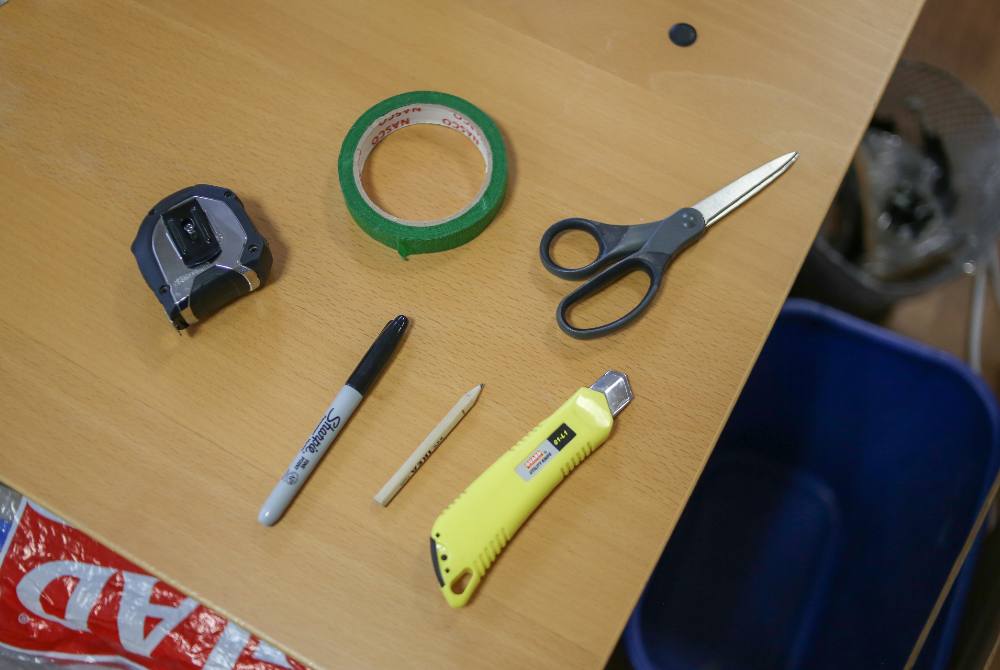
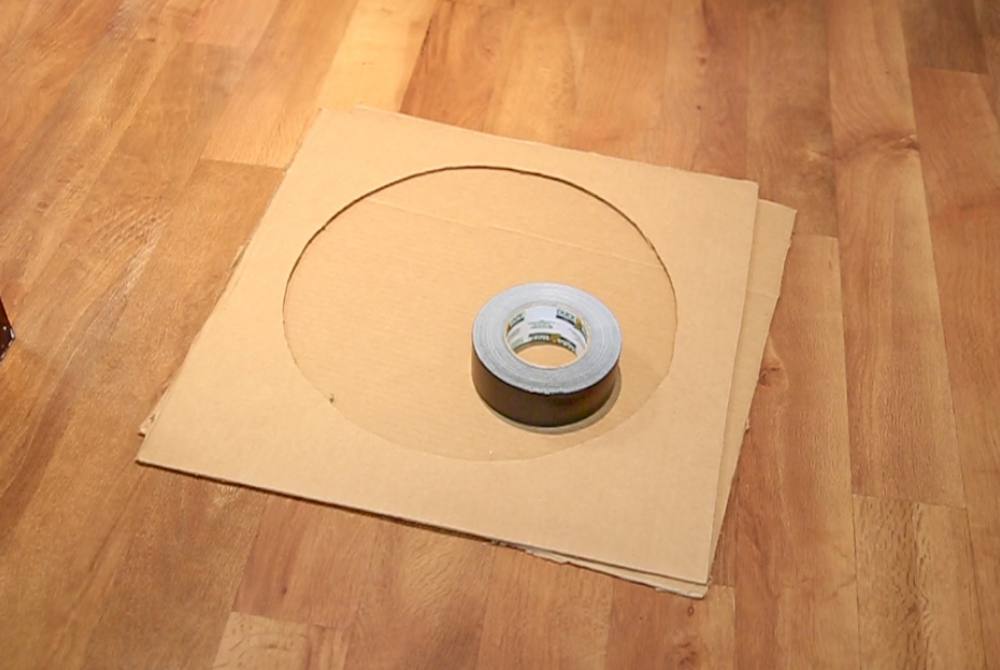
First up, filters. The Government of Canada recommends that filters for public spaces like schools and offices are labelled “13” in the MERV rating scale — a classification system for filters.
Corsi-Rosenthal boxes call for four 50.8-centimetre (20-inch) MERV 13 filters, which make up the walls of the box. It’s important to buy filters that are at least five centimetres (two inches) thick, according to the CDC’s research.
Thicker filters also get more mileage, said Siegel. “So even though they're a little bit more expensive, you can definitely run it for longer.”
Sayson used 2.5 centimetre (one inch) thick filters — she found these easier to handle, and still managed to hit the ideal air change rate for The Tyee's office. But Sayson says she's considering using the thicker version next time.
Next, a box fan.
Here, too, there are some important choices to make. The most powerful box fans might provide the best oomph to clean the air, but they tend to be loud.
“Moving air makes noise, and noise makes people annoyed with air cleaners,” said Siegel. Because the best filter is the one that actually gets used, Siegel recommends taking noise into account when choosing a box fan.
“It might make sense to have two smaller air cleaners that are a little bit quieter rather than one big one that sounds like a jet engine.”
Next comes the standard pieces: duct tape (Sayson used two rolls for four box filters) and cardboard — Sayson repurposed the cardboard that the filters came in. All told, Sayson’s Corsi-Rosenthal boxes came to $153 each.
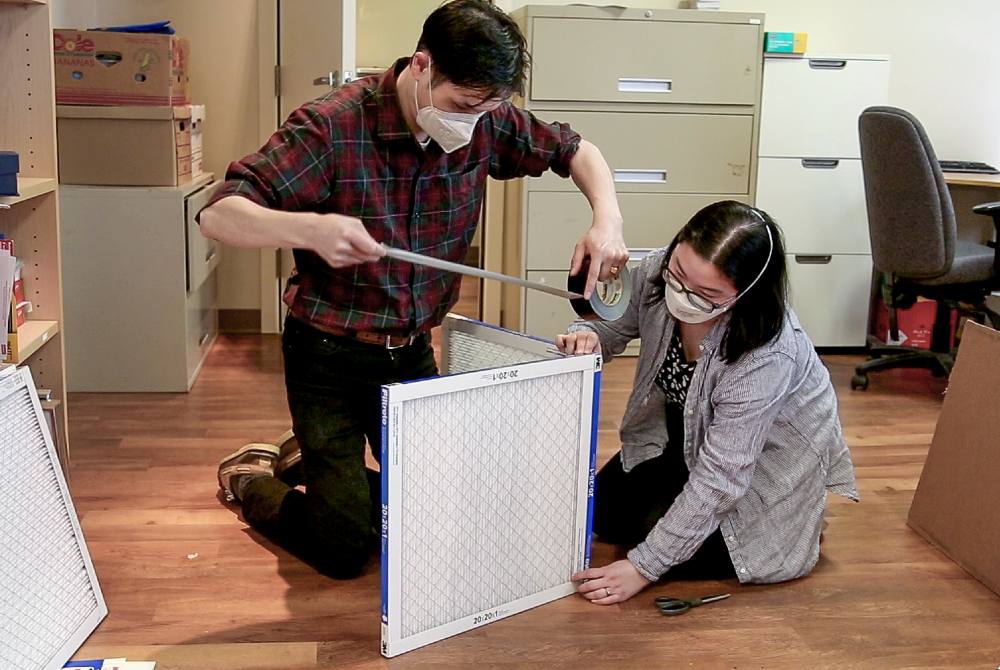
Step 1: Make the filter ‘box’
Sayson and her partner, Jeffery Chong, assembled the four “walls” of the box, taping them together with duct tape. “It’s a lot easier when you have two people,” she said.
But for those working solo, there are tricks. Check out, for example, this video of Richard Corsi himself building his brainchild on his own, using a strategic taping approach to hold things together.
Fair warning: each filter should have an arrow on it to indicate the direction of airflow. Be sure to align the arrows so they point inward to avoid unnecessary frustration and re-taping after building an accidental, inside-out-filter.
Then, cut a piece of 50.8-centimetre (20-inch) cardboard, and tape this to the bottom.
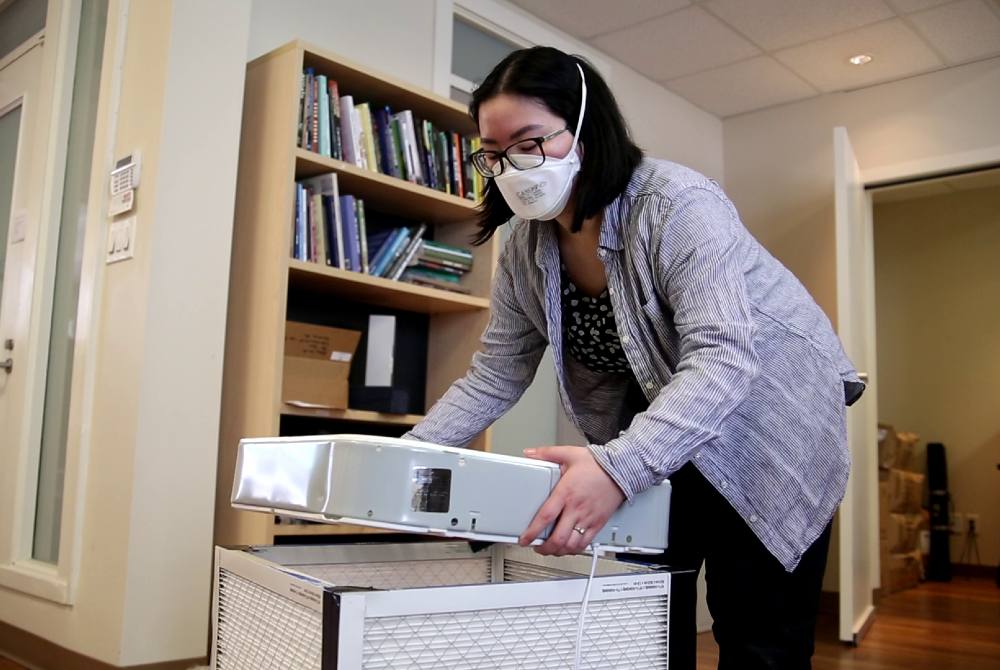
Step 2: Put the fan on top
A 50.8-centimetre (20-inch) fan should sit nicely on top of the taped furnace filters.
The Corsi-Rosenthal box has an important feature: a piece of cardboard with a circle cut from it called a “shroud.” The cardboard shroud blocks off the corners of the fan, keeping unfiltered air from getting trapped in the corners. “It's kind of a small thing, but it's actually really important,” said Lindsley.
That means cutting a circle in cardboard, which Sayson discovered is deceptively challenging in the absence of a protractor, Sayson improvised, using a compass and string to mark out a circle.
“If you look at each of the boxes, you'll see that those circles are not perfect,” she said. A sharp X-Acto knife helps the cutting process.
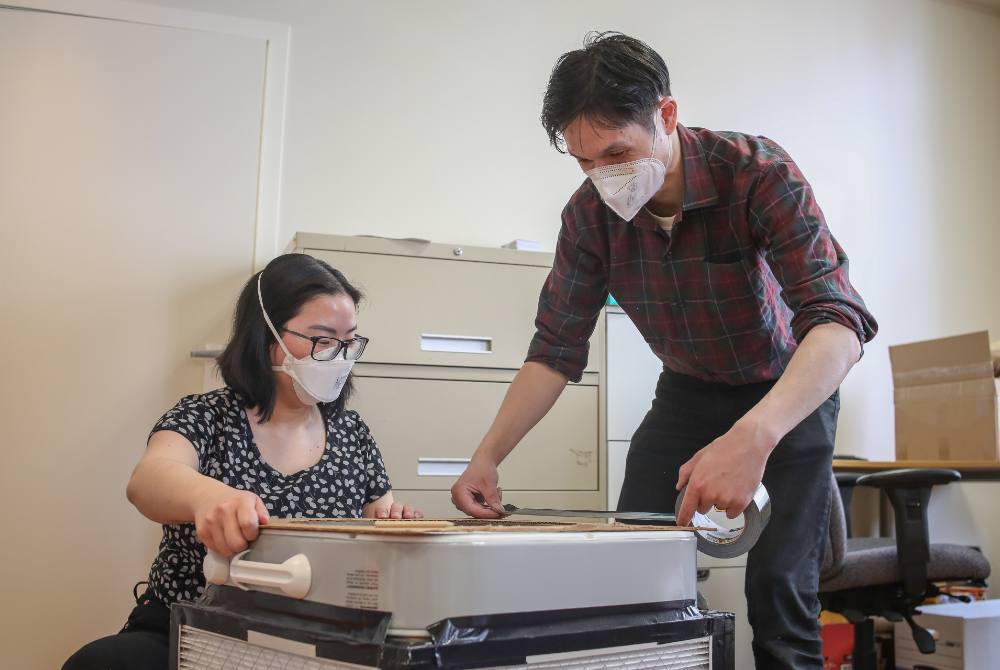
Step 4: Secure the whole thing with (lots!) of duct tape
When it comes to DIY fan-making, sealed edges are key. Depending on the design of your box fan, it might leave little air gaps on the corners. Those cannot do. Sayson used triangular pieces of cardboard and lots of duct tape to seal them up. But lots of tape could also do the job.
The task here is to ensure all the seams and gaps are taped, then taped again.
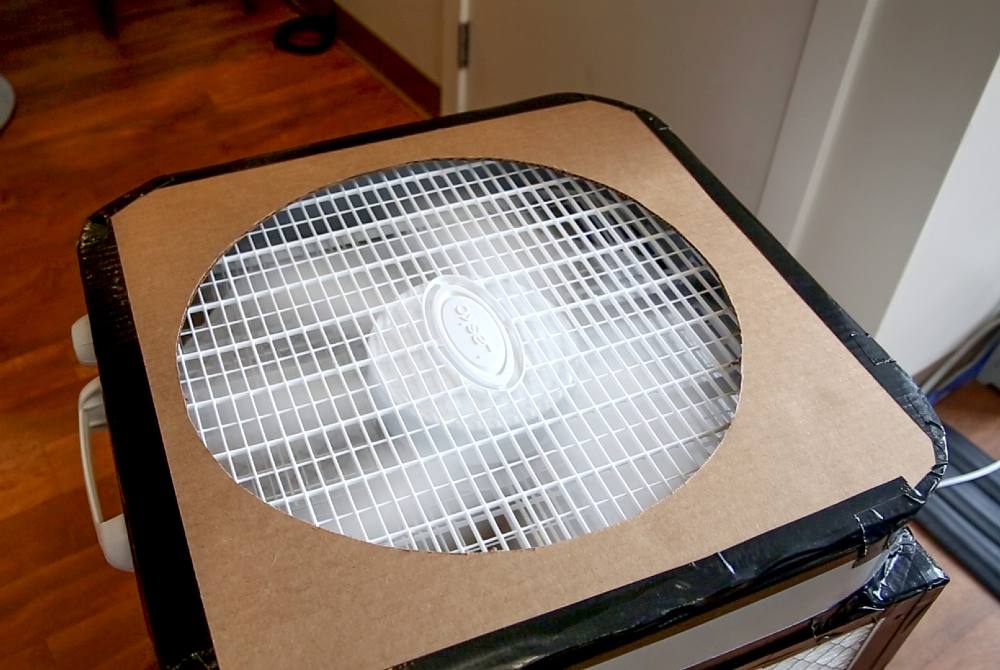
Step 5: Revel in clean air
Plug your fan in, and enjoy purified air thanks to your handiwork.
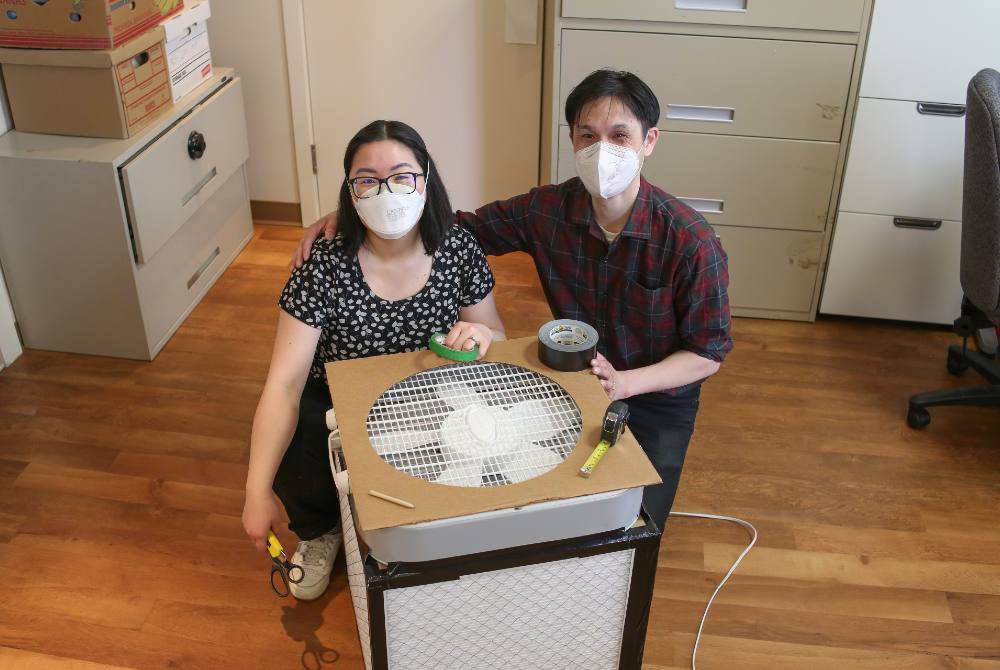
If any of this sounds complicated, Sayson assures it’s a remarkably easy task. It also comes with the satisfaction of knowing you’ve made a tool to keep people safe.
“People are pretty cautious,” she said, “so doing things to ease concerns about sharing space with people out in the world — it was good to have that reassurance.” ![]()
Read more: Health, Coronavirus



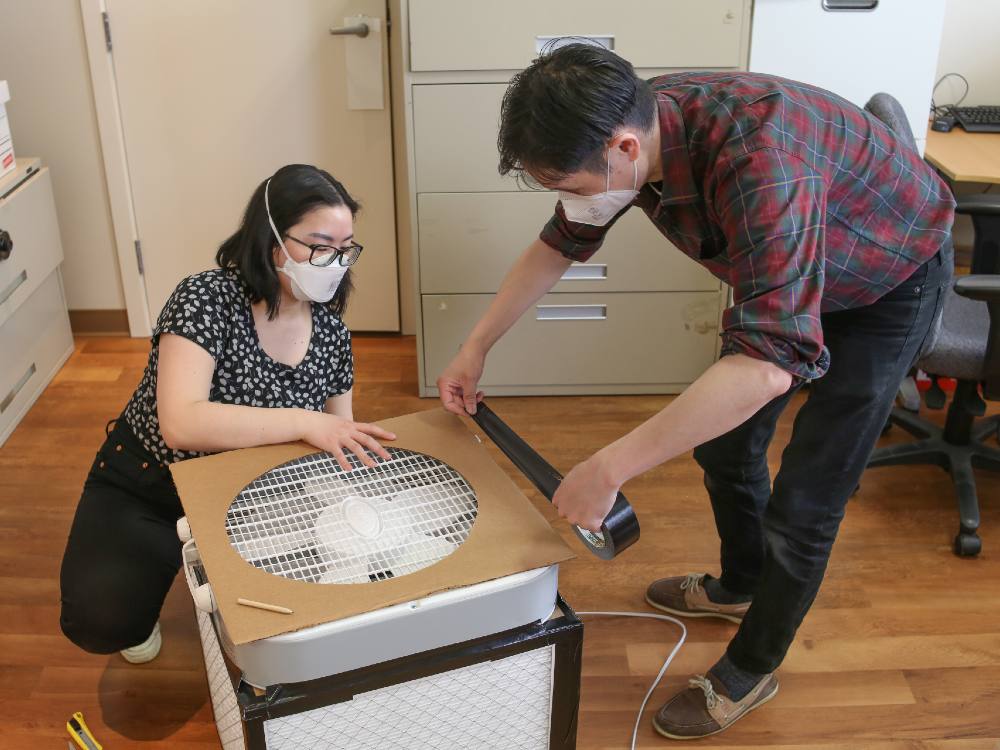












Tyee Commenting Guidelines
Comments that violate guidelines risk being deleted, and violations may result in a temporary or permanent user ban. Maintain the spirit of good conversation to stay in the discussion and be patient with moderators. Comments are reviewed regularly but not in real time.
Do:
Do not: